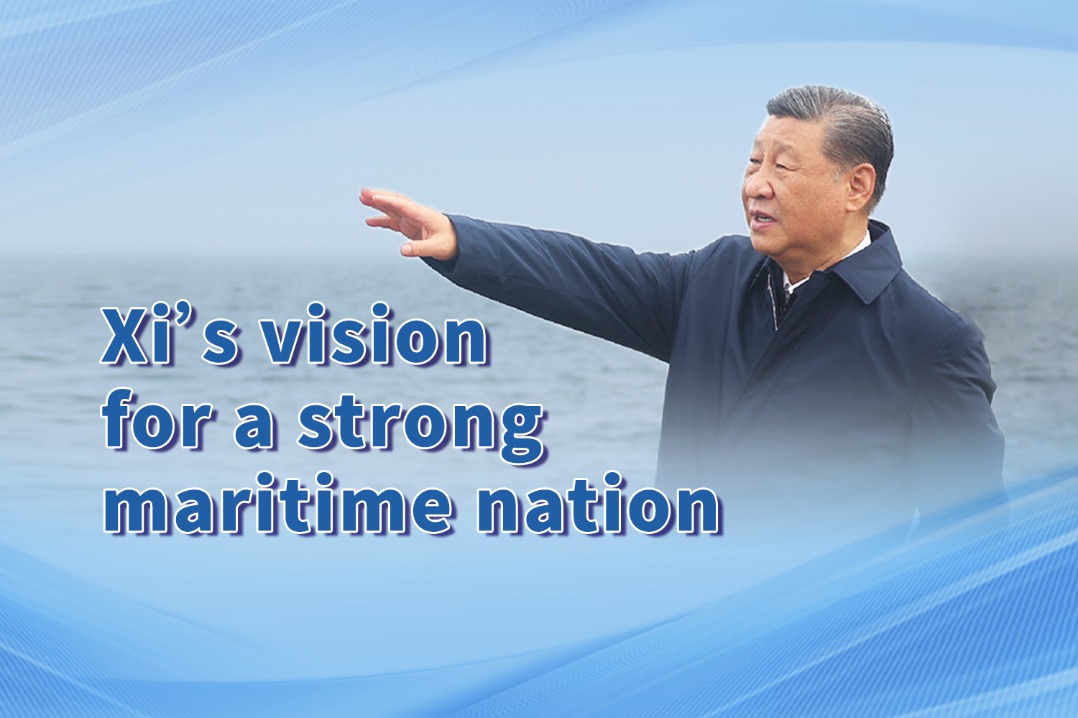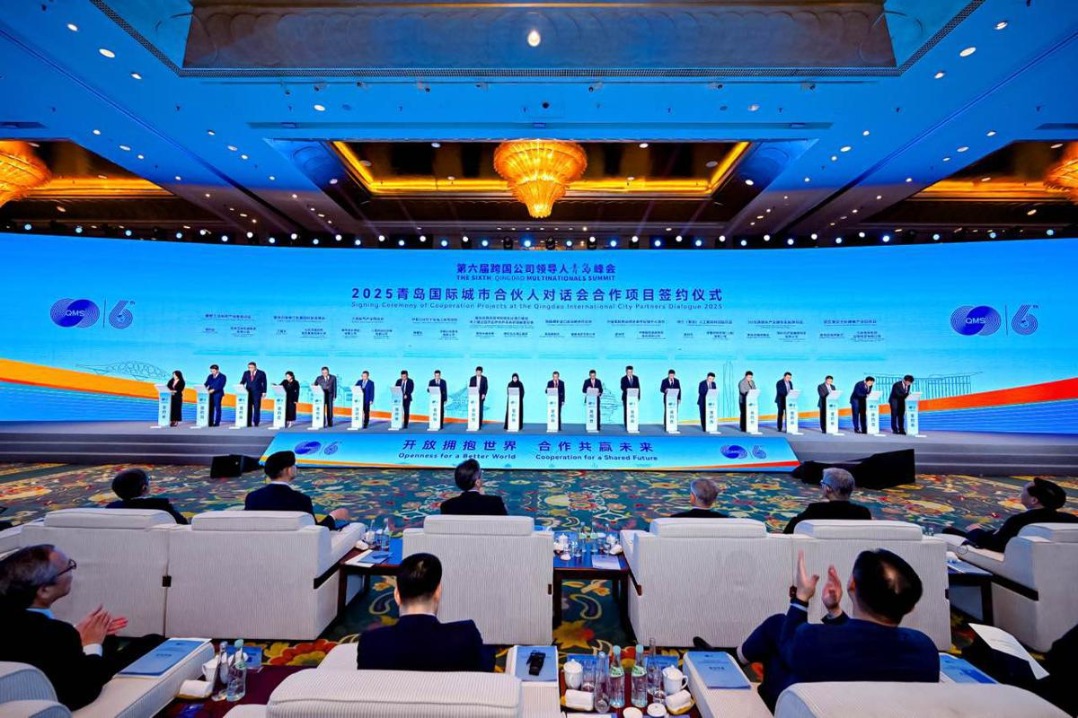Emergency brake release


Frictions between the US and China are taking the steam out of their effectiveness as global growth engines
As the US-China relationship continues to worsen, the stability and growth of the global economy is at grave risk. That is especially the case since both the United States and China have enjoyed major benefits from their interdependency over the last 20 years-benefits that have also had powerful spillover effects for the rest of the world. Conflict resolution between the world's two largest economies is urgently needed.
There can be no mistaking the support that the US and China have provided to the global economy over the past 40 years. In the 1980s, the two nations collectively accounted for 32 percent of the growth in world GDP(as derived from the global database of the International Monetary Fund). In the aftermath of the Global Financial Crisis, from 2009 to 2019, the combined contribution of the US and China to cumulative world GDP growth rose to 45 percent. The power of this two-nation growth engine is all the more impressive in that it is punching well above its combined weight in the global GDP-32 percent-over the post-2008 period.
Significantly, there has been an important role reversal in the impetus from these two global growth engines over this 40-year period. In the 1980s, the US accounted for more than twice the driving force of China in powering the growth of global GDP. In the post-crisis period, from 2009 to 2019, China accounted for more than four times the contribution made by the US. In fact, had it not been for China, the world's GDP growth would have averaged just 2.1 percent over the 2009-19 period, below the 2.5 percent threshold normally associated with global recession. In other words, even though China's economy has been slowing in recent years, it has still been strong enough to keep the world from slipping back into recession in an otherwise precarious post-crisis recovery.
An intensification of the trade and economic conflict between the US and China would threaten to derail the twin engines of the world economy. For a world still in the grips of an unprecedented recession in the aftermath of the lockdowns in response to the outbreak of the novel coronavirus, this conflict poses a major risk to the potential of any recovery in the broader global economy. It's not just that the two engines, themselves, are at risk. Supply chain linkages of both the US and Chinese economies are meaningfully intertwined with most other major economies around the world.
According to a recent study by the International Monetary Fund, the expansion of global value chains accounted for fully 73 percent of the explosive five-fold growth in global trade between 1993 and 2013.
Moreover, research reported in the 2019 Global Value Chain Development Report found that the massive widening of the US-China merchandise trade deficit since China's accession to the World Trade Organization in 2001 stems mainly from the offshoring of production to China from other developed countries (especially Japan and Asia's newly industrialized economies such as the Republic of Korea).
There are, of course, many who believe that it is relatively simple for the world to disengage from its reliance on China and turn to other suppliers. Likewise, some Chinese suggest that it is possible for China to reduce its dependence on the US and rely more on its own internal sources of economic growth. Both perspectives get to the heart of the so-called decoupling debate and the related forces of economic nationalism pushing for "reshoring" to take the place of "offshoring"-the case to bring foreign production back home.
If only it were that simple. Today's global economy is far more integrated than ever before. Despite a protracted slowdown of world trade growth in the aftermath of the 2008-09 global financial crisis, trade still stands at around 28 percent of world GDP. That's essentially double the 13.5 percent average share in 1947-91. The tighter that trade is woven into the fabric of global commerce, the tougher it will be to disentangle those linkages through a disruptive global decoupling.
A bilateral conflict between two major economies-the US and China, in this case-will backfire. In light of its ominous fiscal trajectory as an outgrowth of the COVID-19 recession, the domestic saving shortfall of the US will deepen dramatically, making it even more prone to large trade deficits in the years ahead. Closing off the China option through a bilateral decoupling will do nothing to reduce the overall size of the US trade gap. It will merely force a rearrangement of the pieces of the US multilateral trade deficit with its other trading partners, most likely to higher-cost foreign production platforms. Ironically, that would be the functional equivalent of a tax hike on US companies, workers and households.
The bottom line: Not only do China and the United States need each other, but without the two most important engines pulling the rest of the train, the global economy is in great peril.
The author is a member of the faculty at Yale University and former chairman of Morgan Stanley Asia. He is also the author of Unbalanced: The Codependency of America and China. The author contributed this article to China Watch, a think tank powered by China Daily. The views do not necessarily reflect those of China Daily.


































